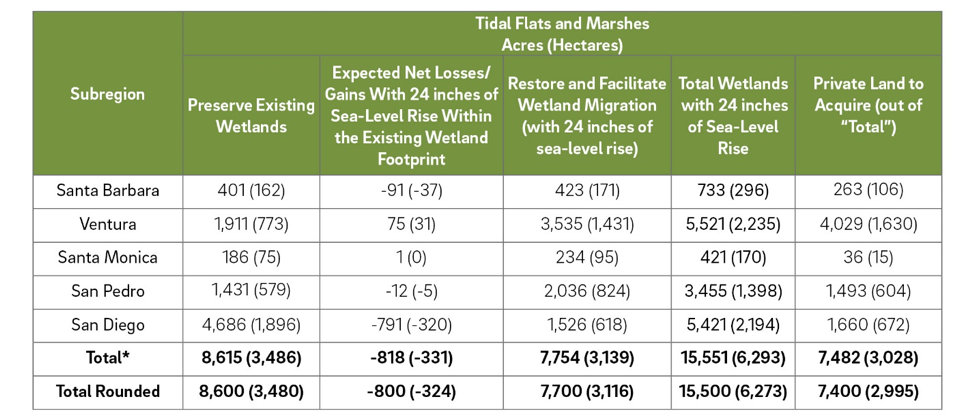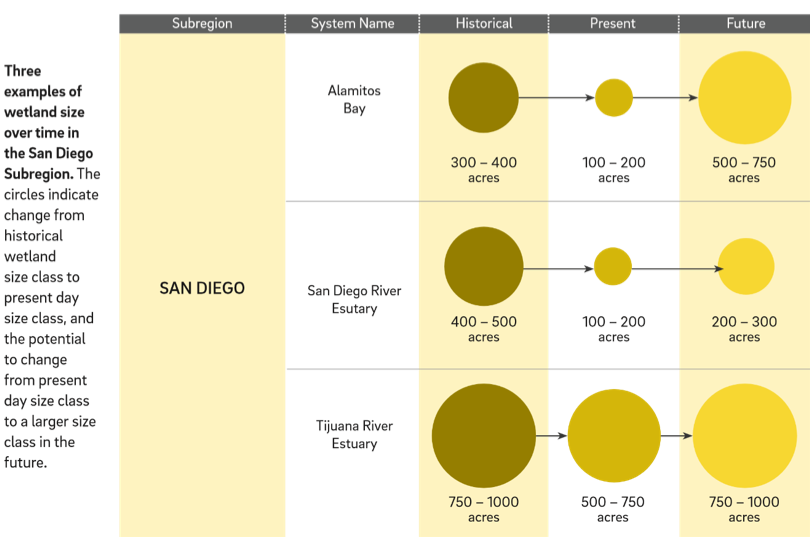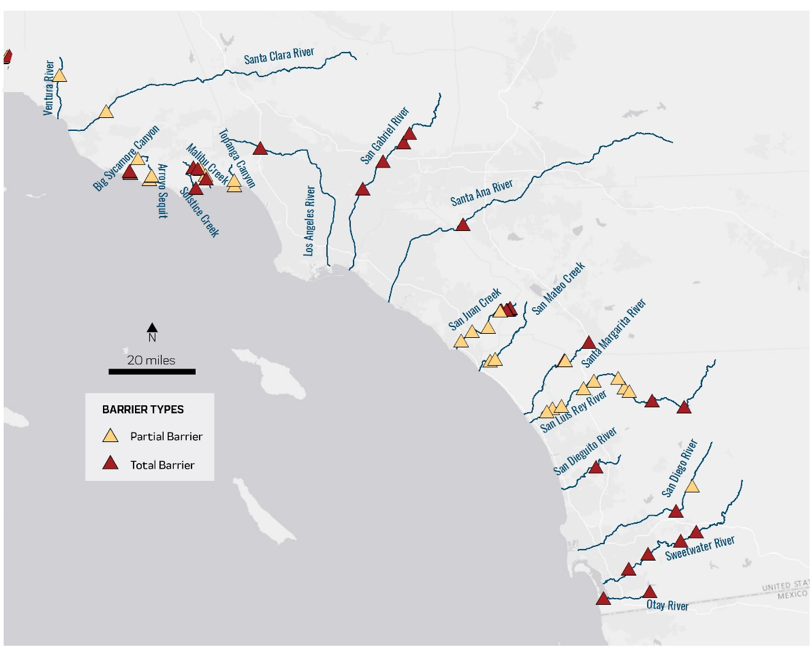My sense of scale has changed as a California Sea Grant State Fellow working partly with the State Coastal Conservancy, focused on large-scale coastal protection and restoration, and partly with the San Francisco Estuary Institute’s Resilient Landscapes team who apply knowledge based on landscape level processes and historical ecology to facilitate conservation and restoration. Real-world conservation and restoration require complete knowledge of landscape-scale processes and whole systems ecology in addition to all of the human elements and considerations.
Nowhere has this need to consider the full scope of ecology, physical processes and human impacts been more evident than in my work with the Southern California Wetlands Recovery Project (WRP), a multi-agency collaborative effort to preserve and restore wetlands in southern California. As a fellow, I am tasked with helping to maintain the functioning of the WRP.
The WRP has four main goals:
- preserve and restore tidal wetlands,
- preserve and restore non-tidal wetlands,
- support education and compatible access related to these wetlands and watersheds, and
- advance the science of wetland restoration and management.
My main project as a California Sea Grant State Fellow includes assisting with the culmination of a five year effort to envision, create and release the WRP’s Regional Strategy 2018.
The Regional Strategy 2018 is a roadmap and guide for restoration practitioners, scientists, and land managers in southern California focused on wetland conservation and restoration. It is structured much in the same way as the WRP; with each of the four goals mentioned above being a focus of the report.
Restoring tidal wetlands
For the first goal, restoring tidal wetlands, we used a combination of historical information, present day wetland extent, and future sea-level rise projections based on models to develop quantitative objectives such as wetland area (Figure 1) and wetland size (Figure 2) to restore, and restoring habitat diversity and hydrological connectivity among others.
Figure 1

We also explored these historical, present and future data by subregion and by archetype, or groupings of coastal wetlands based on similar form and structure. The southern California coast was divided into five different subregions. Habitat types in southern California were divided into seven different archetypes that were determined by grouping systems based on such aspects as vegetation and physical structure and processes. These archetypes were then validated by the WRP’s Science Advisory Panel. By further exploring differences by archetype and subregion, we determined certain areas or habitats to focus efforts that might be the most impacted, or have the most room for growth or expansion.
Figure 2

Based on these analyses, we also developed detailed management strategies to achieve each objective (Figure 3) and were able to advise on the timing and prioritization of these management strategies.
Figure 3

Restoring non-tidal wetlands
The objectives for goal two are focused on recovering and restoring non-tidal wetland area, habitat composition and connectivity. One of the connectivity objectives in this goal provides maps that show the total and partial barriers to steelhead passage that have been identified as high priorities in NOAA’s Southern California Steelhead Recovery Plan (Figure 4).
Figure 4

Goal three is focused on coastal wetlands education and access, and contains objectives such as supporting community-based wetland restoration projects, including compatible and equitable public access and promoting development of educational materials and activities.
Goal four outlines research objectives and questions focused on such topics as Channel Island ecosystems, intermittently-open estuaries, shallow subtidal zones, and wetland-upland transition zones.
The Southern California Wetlands Recovery Project Regional Strategy 2018 is available here.
Looking at the big picture
Following along on this process was invigorating and at times overwhelming; it was a massive effort carried out by multiple agencies and advisory groups. However, they were able to condense this abundance of data and information into a format that is accessible. This report will be an enormous step in advancing conservation and restoration in southern California at this critical time point.
The staff at State Coastal Conservancy are masters of facilitation and productivity, the scientists and designers at San Francisco Estuary Institute are brilliant science communicators, and both understand the importance of thinking across spatial and temporal scales. I have honed these skills during this effort and will use them as I start a Ph.D. program this spring. Witnessing this large-scale effort will most definitely shape my future research focus, making my work more dynamic and applicable.
Written by Julie Gonzalez





